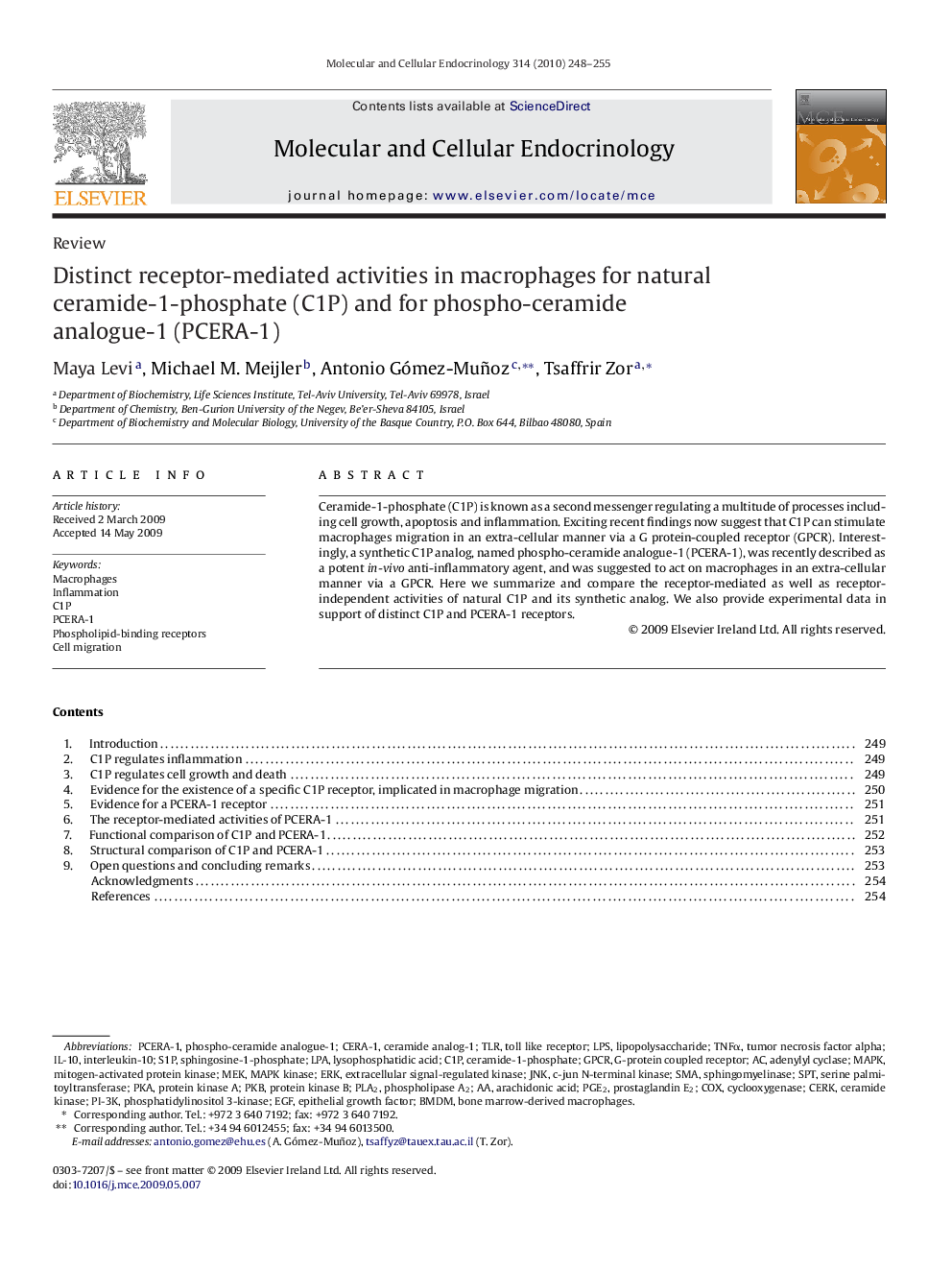| Article ID | Journal | Published Year | Pages | File Type |
|---|---|---|---|---|
| 2197118 | Molecular and Cellular Endocrinology | 2010 | 8 Pages |
Abstract
Ceramide-1-phosphate (C1P) is known as a second messenger regulating a multitude of processes including cell growth, apoptosis and inflammation. Exciting recent findings now suggest that C1P can stimulate macrophages migration in an extra-cellular manner via a G protein-coupled receptor (GPCR). Interestingly, a synthetic C1P analog, named phospho-ceramide analogue-1 (PCERA-1), was recently described as a potent in-vivo anti-inflammatory agent, and was suggested to act on macrophages in an extra-cellular manner via a GPCR. Here we summarize and compare the receptor-mediated as well as receptor-independent activities of natural C1P and its synthetic analog. We also provide experimental data in support of distinct C1P and PCERA-1 receptors.
Keywords
Related Topics
Life Sciences
Biochemistry, Genetics and Molecular Biology
Cell Biology
Authors
Maya Levi, Michael M. Meijler, Antonio Gómez-Muñoz, Tsaffrir Zor,
